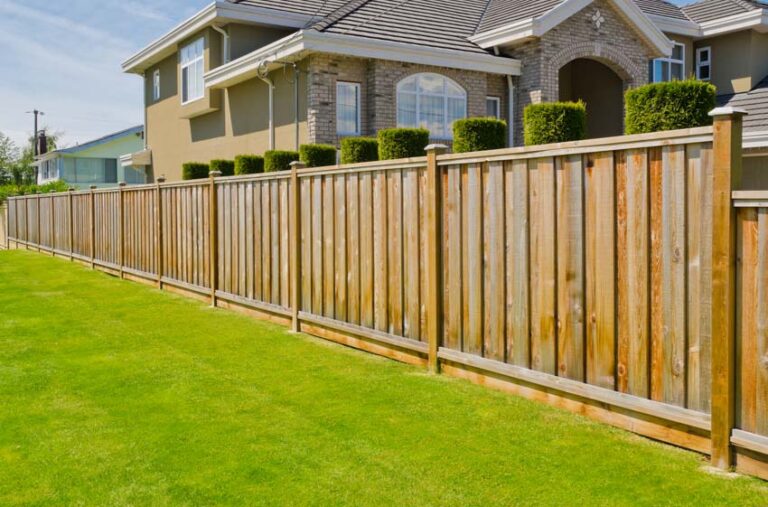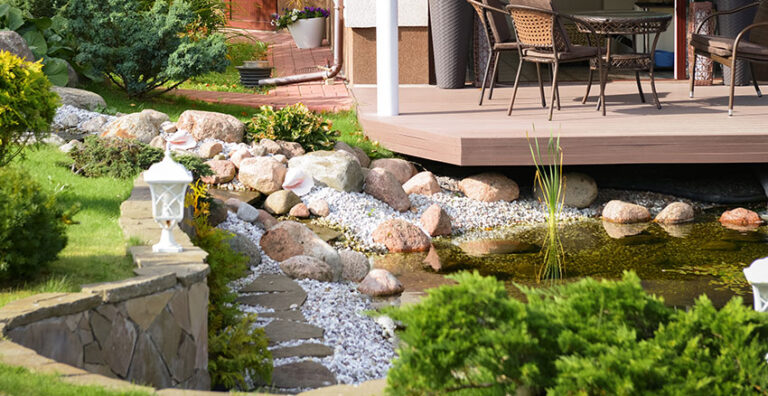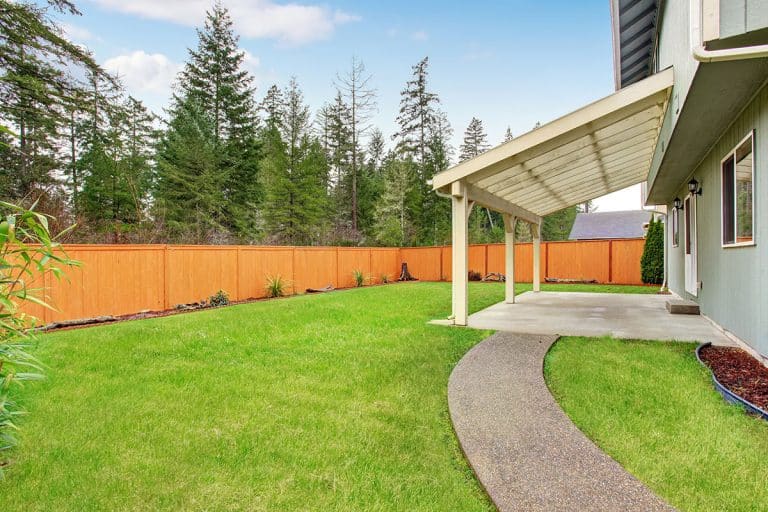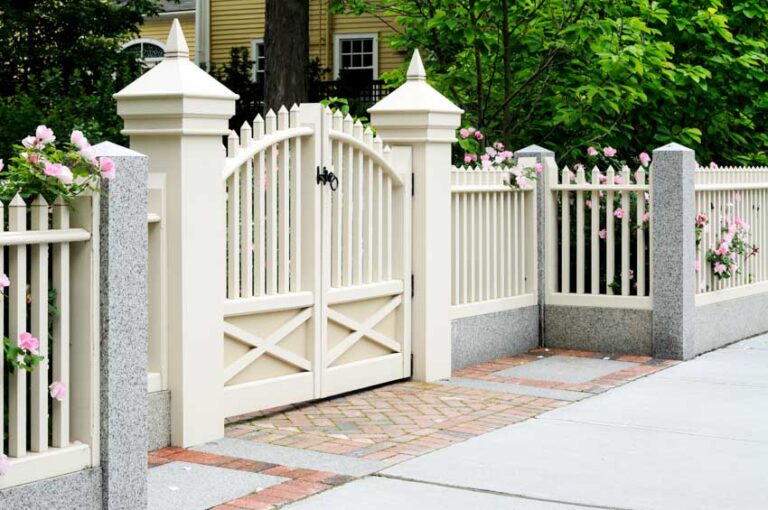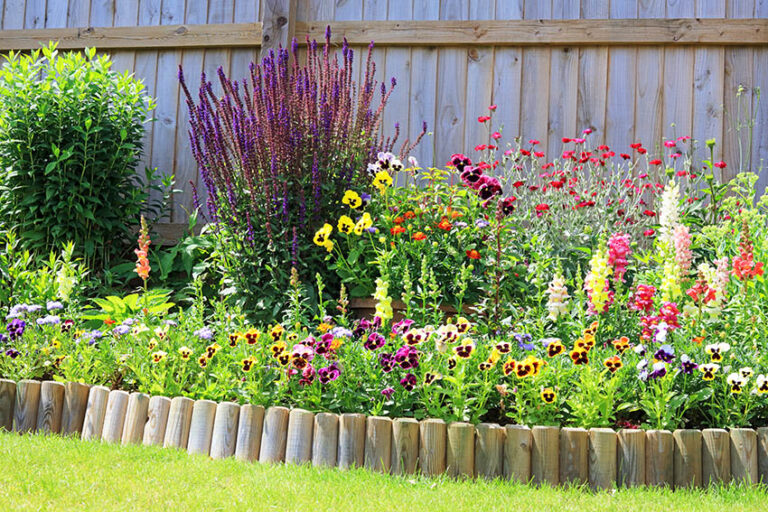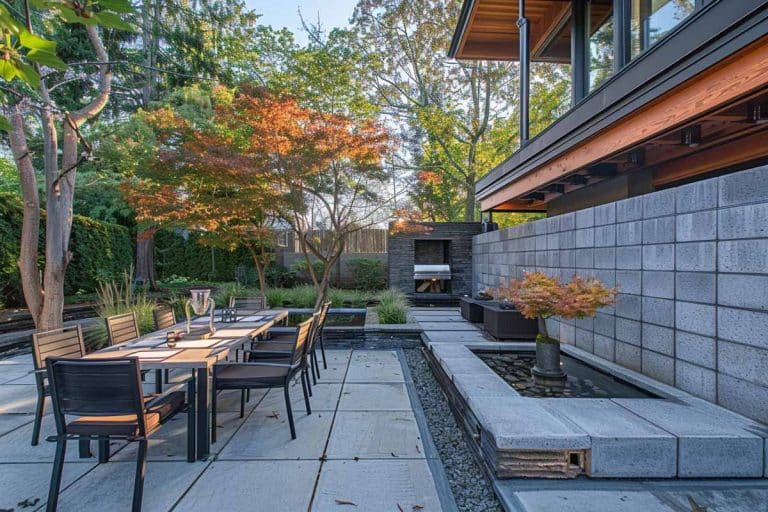Side By Side Fence (Designs & Materials)
This guide shares side by side fence designs including what it is, different materials, pros & cons, comparison to board on board, and side by side fencing cost versus the other types.
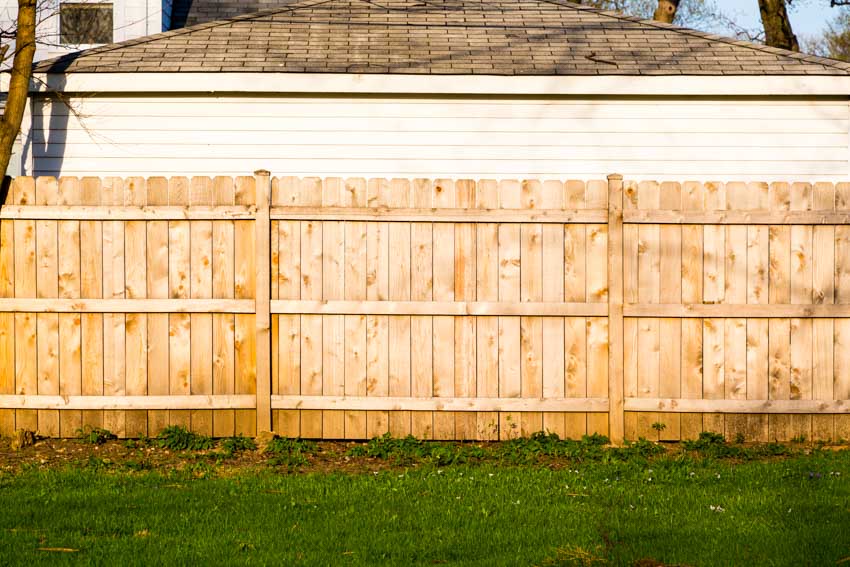
Fences can take up a lot of money to put up. Thankfully, there are a lot of options for you to consider and some fences cost less than the others. This is the case with SBS fences.
One of the most economical fencing options you could ever get your hands on in the home is the SBS or side by side fence. They’re amazingly stingy when it comes to the materials used because the pickets are actually nailed onto the boards from one edge to the other. This means that almost no wood material is put to waste during its assembly.
Over time, wood is something that can be highly prone to shrinkage but this isn’t that much of a problem with side by side fences. Because of the fact that the pickets are placed so close to each other, even with the eventual shrinkage, they will end up with very small gaps in between. This means that privacy is still guaranteed without any crippling add-on costs.
What Is A Side By Side Fence?

When the wood material hasn’t completely matured and cured yet, a side by side fence will actually block everything off. It will provide complete and total security as well as privacy to the homeowners.
Over time though, given the organic material of wood which has the tendency to shrink, gaps will eventually occur and the privacy provided isn’t as covered anymore.
Granted, a side by side fence may have its own idiosyncrasies and downsides but in the grand scheme of things, it can actually be pretty effective while at the same time, fairly low cost. This means that if you’re trying to get a fence up with a minimal budget, side by side fences are your best candidates to get the job done.
Side By Side Fence Materials

What sets cedar apart from the other wood types is that it actually holds the promise of never shrinking, which wood materials are the most notorious for. Over time, cedar fades off to a silvery gray color.
If you want to retain its color and its appearance, it’s recommended that you maintain it with a heavy-duty sealer at least once a year. This will also give it a better chance to fight off natural rot and decay or at least hold it off for more years. Another durable alternative to cedar wood is redwood fencing.
Vinyl: Although using vinyl as a fence sounds like a fairly new material, this has actually been around for decades now. Despite being around for quite a while now though, vinyl is still somewhat considered as a newcomer in the fencing scene.
Vinyl fencing is great for areas that are prone to dampness as it doesn’t rot nor decay the way natural wood does but it isn’t completely impervious to eventually being worn down though. Over time, vinyl has been observed to turn yellowish, go brittle, or even sag in timelines as short as only a couple of years or so.
Vinyl comes in various grades though and what’s known as “virgin vinyl” is known as the best type. Some manufacturers even offer a lifetime guarantee. This material will require professional installation as everything must be exact and precise.
A millimeter out of line could completely ruin your entire fence so it would be best to leave it up to the experts. The thing that makes vinyl pretty attractive though is that once it’s up, it’s actually maintenance-free. You just need to wash off the occasional dirt and you’re good as new.
Composite wood: Composite wood fences use a rather innovative material. They’re made out of a combination of plastic polymers and wood fibers and other organic and inorganic materials. Every manufacturer has their own unique mix.
The main selling point of composite wood as a material for fencing is that it offers all of the appeals of wood, from the looks to the feel but it doesn’t come along with the usual disadvantages of wood such as being prone to pest damage, rot, and decay.
This means that this material can run costs that are more expensive compared to wood or to vinyl. It costs a lot from the material and even up to the installation but when coming from a reputable manufacturer and installer, it is usually worth it.
Composite is also relatively maintenance-free and doesn’t require anything more than the occasional garden hose spray. See more garden fence ideas here.
Teak and Rosewood: Nothing quite compares to the aesthetics that teak and rosewood can bring to your fence. It has a premium luster and a natural softness to it that no other types of wood can ever rival.
They are rather expensive though. And it is because of this high price tag why teak and rosewood fences are usually sectioned off to really small and prime areas such as pools and other special areas in the backyard.
This material is naturally resistant to insects and has also been known to resist shrinking and even warping over time. As this is natural wood, an annual or bi-annual maintenance of sealer application is required to ensure that it is always kept in its prime and pristine condition at all times.
Side By Side Cedar Fence

Pros
• Has a rich color that can be sustained through pressure washing and annual sealing
• Extremely durable due to the natural oils it contains that makes the material naturally resistant to insects as well as decay without the aid of chemical treatments
• Very stable and has little to no shrinkage at all over time
• Generally more affordable compared to link chain, composite, wrought iron, or even PVC or vinyl
• Absorbs stains and sealers very well which makes it very easy from a maintenance standpoint
• Highly valued for its discernible smell or aroma that tends to add value to its being used as a fencing material
Cons
• Naturally weathers and wears out over time, turning from red into a silvery gray
• Can at times crack and have a fuzzy appearance if not refinished and sealed every now and then
Side By Side Fence Cost Vs Other Types
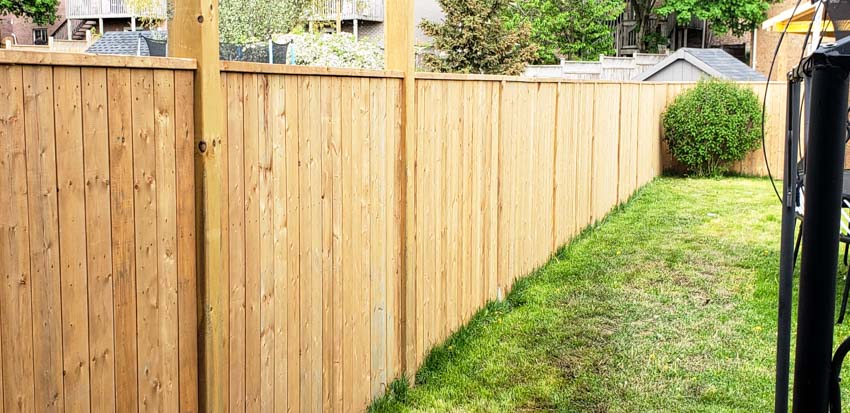
In this range, a side by side fence is at the low end. But just because the price range of an SBS fence can be on the low end, it doesn’t necessarily mean that you should just accept it at face value.
You can still opt to get a side by side fence but get an upgraded material such as opting for cedar and other high-quality types of wood. These premium wood types can really look great in a side by side fence as their color and grain can get showcased accordingly because of how the fence is built out.
Another thing that you ought to take into account when considering side by side fence designs for your property’s perimeter is the climate that you have in your location. For durability, it’s quite common to opt for concrete anchors for a side by side fence.
But this is most recommended for areas that tend to have cold climates and long and harsh winter months. This is because the ground usually freezes over and in such cases, concrete posts that have been sunk at least 36 inches down into the ground are recommended for such climates in order for the side by side fence to really have a solid anchor to latch onto.
For warmer climates though, the best material for a side by side fence would have to be vinyl. This material can withstand dampness and hot climates because it isn’t porous and can resist water more than any type of wood ever could.
It all boils down to this, though. if you are looking for a fence that’s low cost but brings you the best bang for buck value for your money and can outlive a majority of the other fence types out there, then you really shouldn’t look any further than side by side fences. It’s a fairly reliable product and has been known and seen to withstand the use and abuse of years and harsh weather, even.
Board On Board Fence Vs Side By Side
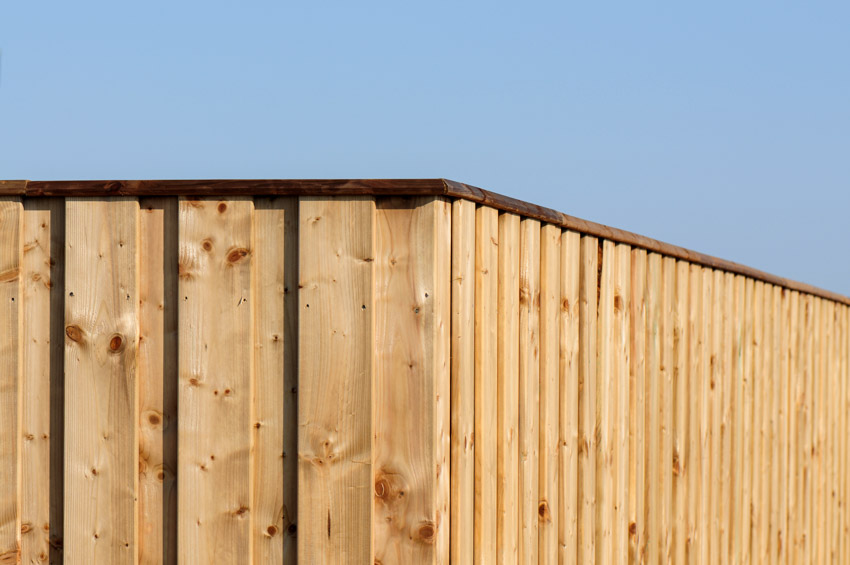
The first layer is usually comprised of 6-inch boards while the second layer is comprised of 4-inch boards. They’re specifically designed to fill in the gaps of the first layer.
Board on board fences are also finished with top caps that cover the picket ends horizontally, which helps out in preserving the wood better as it means that water isn’t seeping right through the wood grains. They’re visually stimulating and aesthetic and they can come in a variety of styles and designs. Here’s how they fare so far:
Pros Of Board On Board Fences
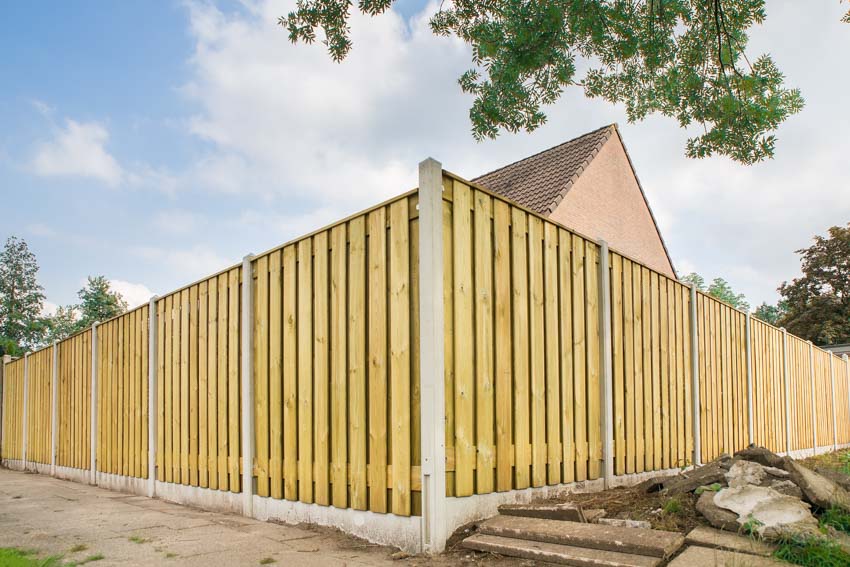
• Visually interesting to look at
Cons Of Board On Board Fences
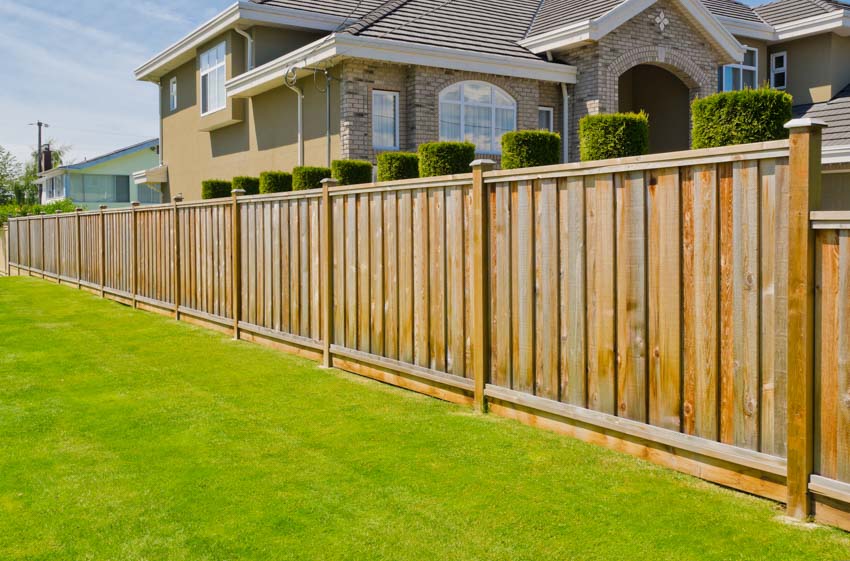
Side by side fences are efficient, simple, and cost-effective. Although they may have gaps over time, the fact that they’re far cheaper compared to the board on board fence still comes into consideration at the end of the day.
Pros Of Side By Side Fences
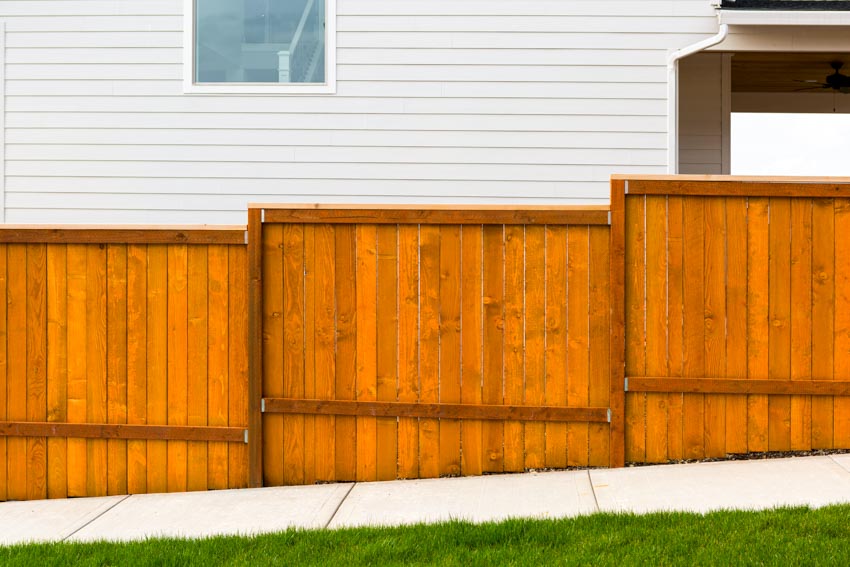
• Increases curb appeal
Cons Of Side By Side Fences

The reality is that when it comes to the basics, a board on board fence and a side by side fence are essentially the same. The only difference here is that a board on board fence has an extra layer that’s specifically meant to go right in between the supposed gaps of the first layer. The decision to choose one over the other would have to depend on a homeowner’s priorities.
If the priority is to get security and safety for the home without breaking the bank, then a side by side fence should serve just fine. It looks attractive enough to increase curb appeal and give the right maintenance, which can last for a lot of years.
If you don’t mind the small gaps in between the planks due to the wood’s shrinkage, then there should be no issues with opting for the cost-friendly side by side fence.
However, if your top priority is complete and total privacy no matter the cost, then the board on board fence is the best option. It’s a bit heavy on the pockets as it’s considerably more expensive but then again, you never have to worry about having gaps in the fence as it has a second layer of planks that preempts this.
See more related content in our article about the different types of wire fences on this page.

